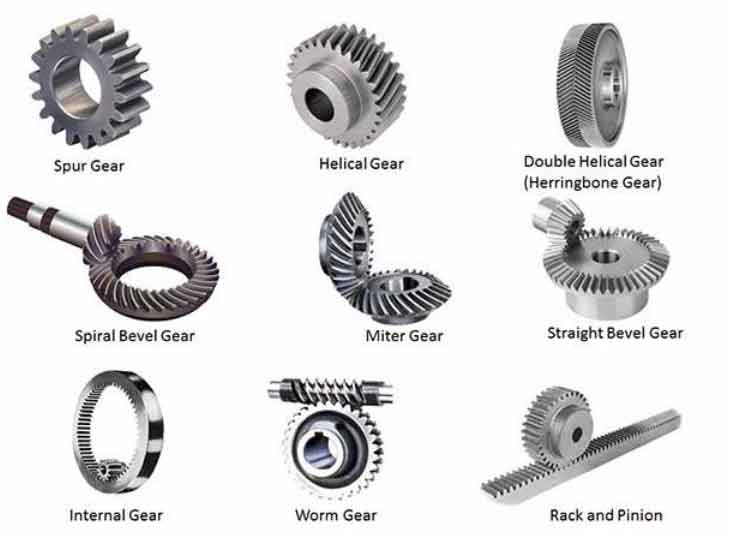Helical gears and internal gears are two different types of gears commonly used in mechanical systems. While both types serve similar functions, they have distinct design characteristics and applications. Let’s compare them in terms of their design, advantages, disadvantages, and typical applications.

- Design:
- Helical Gears: Helical gears have teeth that are cut at an angle to the gear’s axis. The teeth form a helix pattern around the gear, resulting in gradual engagement and smooth operation. They are usually mounted on parallel shafts, but they can also work with non-parallel or crossed axes.
- Internal Gears: Internal gears have teeth on the inside of the gear, with the teeth facing inward. They are often meshed with a smaller pinion gear that has external teeth. Internal gears have a larger diameter than the pinion gear.
- Advantages:
- Helical Gears:
- Smoother operation: The gradual engagement of helical gears reduces noise and vibrations compared to other gear types.
- Higher load capacity: Helical gears can handle greater loads due to multiple teeth being in contact simultaneously.
- Efficient power transfer: The contact between teeth is distributed along the gear face, leading to higher efficiency.
- Adjustable backlash: Backlash (clearance between gear teeth) can be adjusted, which allows for precision control.
- Internal Gears:
- Compact size: Internal gears provide a more compact gear arrangement, as the larger gear surrounds the smaller pinion gear.
- Increased gear ratio: The gear ratio can be increased using internal gears without increasing the size of the gear assembly.
- Helical Gears:
- Disadvantages:
- Helical Gears:
- Axial thrust: The helical angle generates an axial thrust force, requiring additional bearings to counteract it.
- More complex design: Helical gears require precise alignment and specialized manufacturing processes, making them more complex to produce.
- Inefficient at high speeds: The sliding contact between teeth can result in higher friction and heat generation at high rotational speeds.
- Internal Gears:
- Limited applications: Internal gears are primarily used in specific applications where their compact size and increased gear ratio are advantageous.
- Difficult to manufacture: The manufacturing process for internal gears is more complex and costly due to their internal tooth profile.
- Helical Gears:
- Typical Applications:
- Helical Gears: Helical gears are widely used in various applications, including automotive transmissions, industrial machinery, power plants, and gearboxes where smooth and efficient power transfer is required.
- Internal Gears: Internal gears find applications in industries such as robotics, printing presses, and certain types of gearboxes, where space-saving and increased gear ratios are critical.
In summary, helical gears offer smoother operation, higher load capacity, and adjustable backlash, but they require more complex design and can generate axial thrust. Internal gears, on the other hand, provide a more compact size and increased gear ratios but have limited applications and are difficult to manufacture. The choice between these gear types depends on the specific requirements of the application, including space limitations, load capacity, efficiency, and gear ratio considerations.
